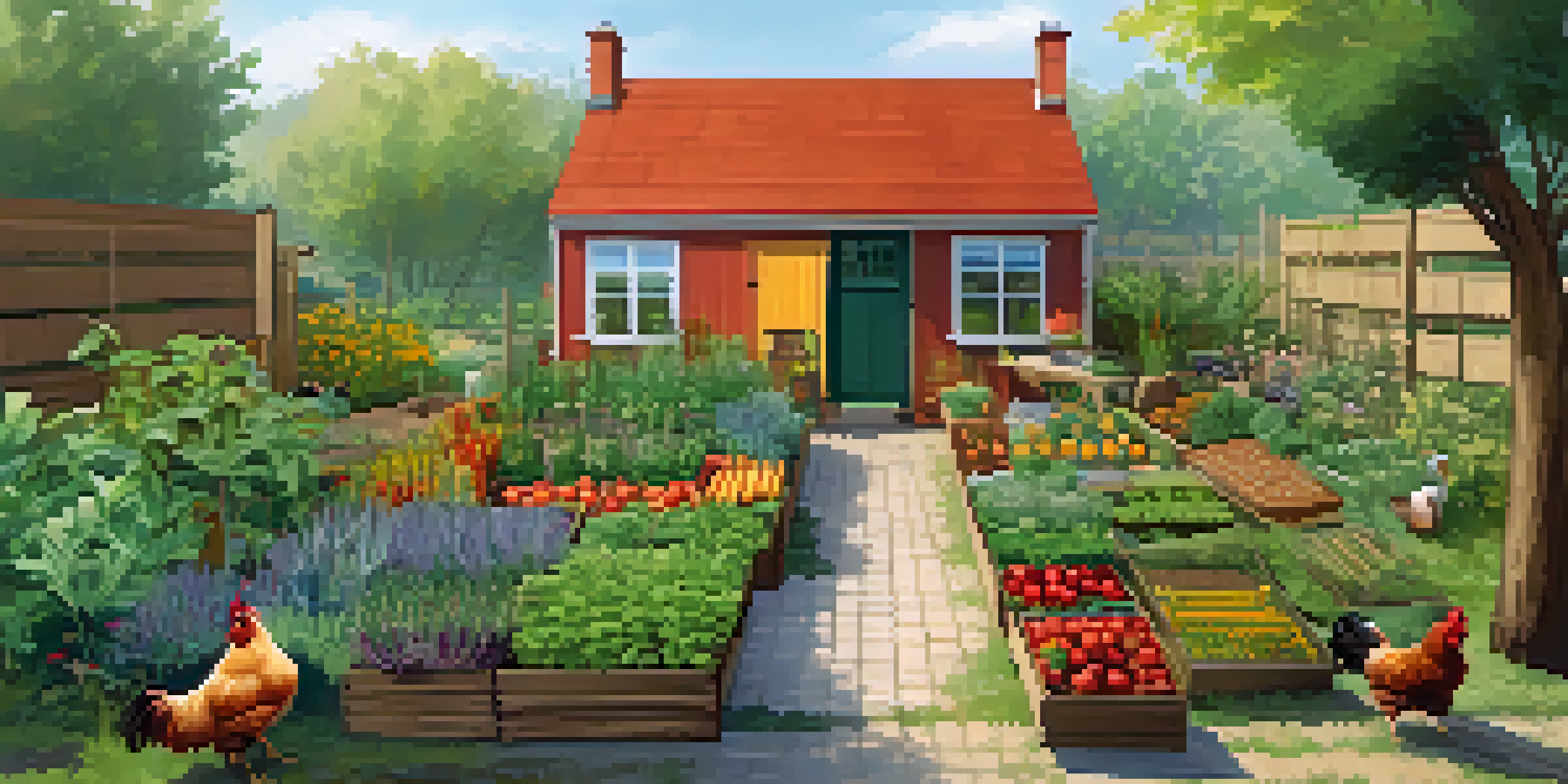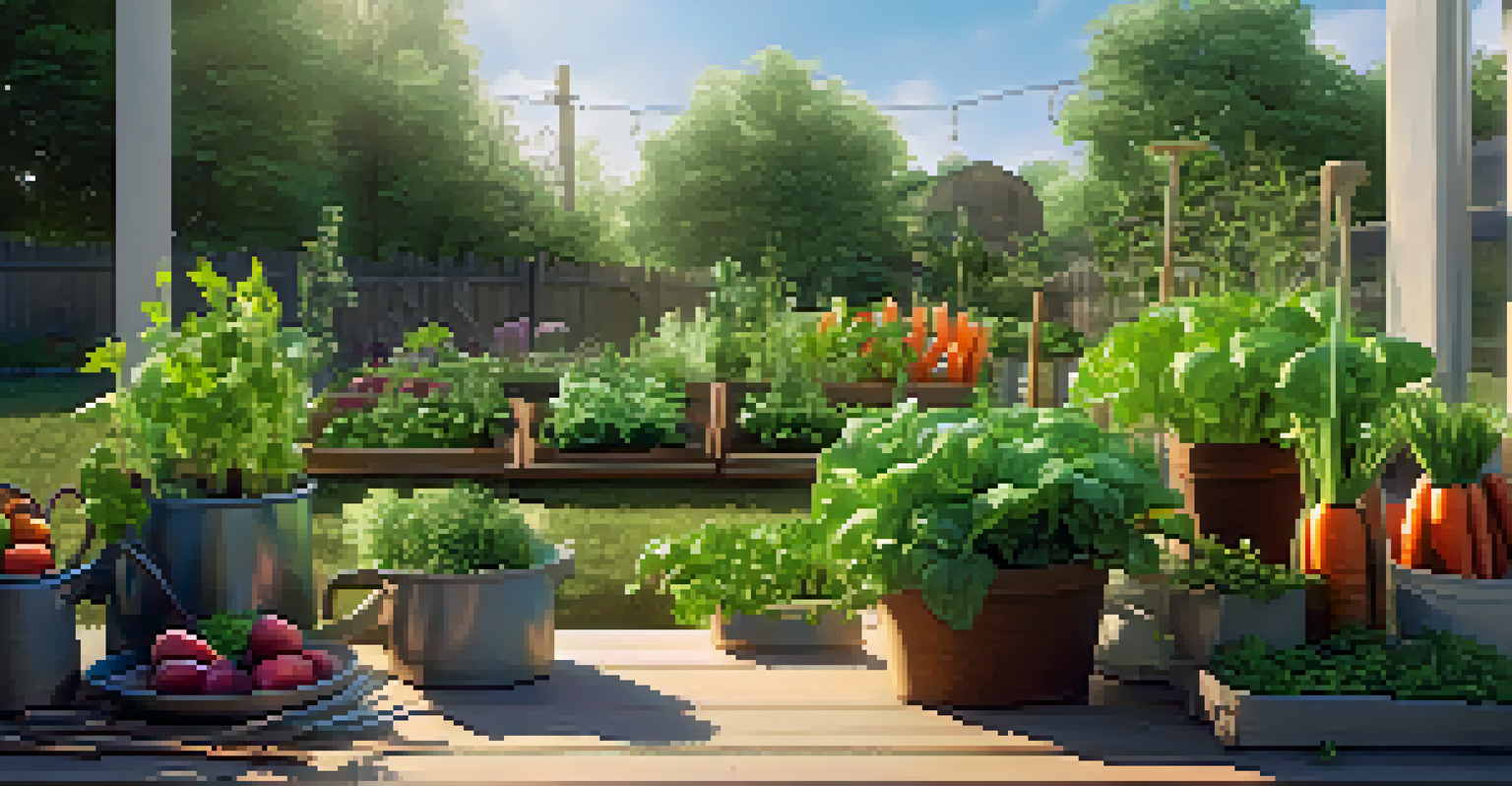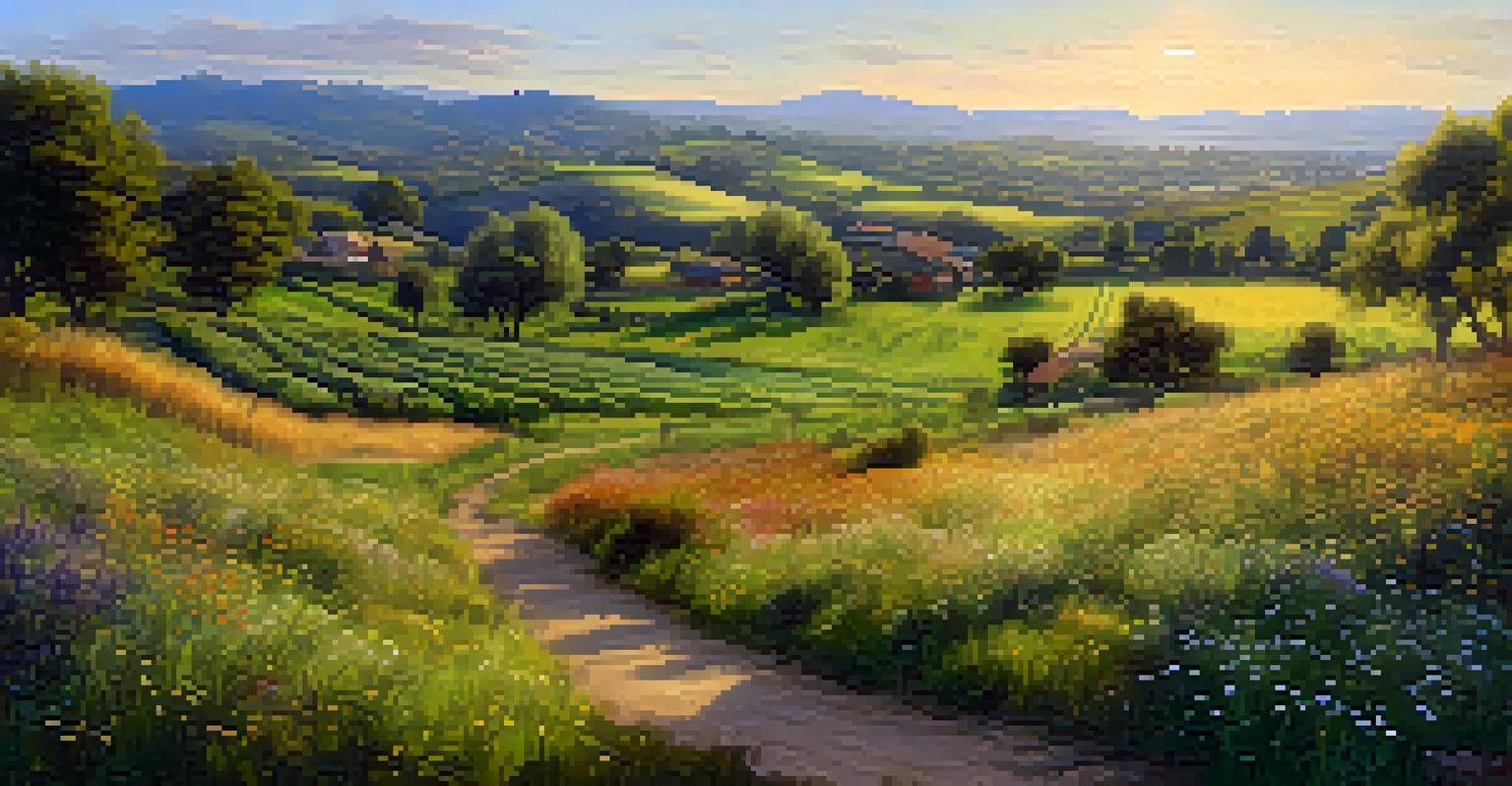Permaculture Zones: Organizing Space for Maximum Yield

Understanding the Concept of Permaculture Zones
Permaculture zones are a way to design your garden or farm for maximum efficiency. The idea is to arrange different areas based on how often you need to interact with them. By grouping plants and systems according to their needs and your access, you can create a thriving ecosystem that minimizes effort and maximizes yield.
The greatest threat to our planet is the belief that someone else will save it.
Imagine your garden as a bustling city, where each zone represents a different neighborhood. The closer you are to your home, the more frequently you visit, just like a busy town center. This zoning allows you to plan your space effectively, ensuring that high-maintenance plants are easily accessible while others can thrive in the background.
By understanding these zones, you can optimize your gardening strategy. For example, placing herbs and vegetables that need daily care near your kitchen saves time and energy. This thoughtful arrangement can lead to a more productive and enjoyable gardening experience.
Zone 0: The Home Base of Your Permaculture Design
Zone 0 refers to your home and serves as the heart of your permaculture setup. It's where you plan, store tools, and maintain your gardening supplies. The home is essential because it provides the foundation for all other zones, influencing their design and accessibility.

Consider your home as a control center—everything starts here. Whether it's planning seasonal crops or storing harvested produce, this zone allows for easy management. By integrating your living space with your permaculture goals, you foster a deeper connection to your food and environment.
Designing for Garden Efficiency
Permaculture zones optimize gardening by arranging areas based on interaction frequency, enhancing productivity and minimizing effort.
Incorporating sustainable practices into your home, such as composting or rainwater collection, can also enhance your overall system. By making your home a part of the permaculture design, you create a seamless flow between living and gardening, maximizing both efficiency and yield.
Zone 1: The Closest Garden Area for Daily Attention
Zone 1 is the area closest to your home, designed for plants and herbs that require frequent care. This could include vegetables, salad greens, and culinary herbs that you want to harvest regularly. By placing these plants within easy reach, you ensure that they receive the attention they need to thrive.
Nature does not hurry, yet everything is accomplished.
Think of Zone 1 as your personal kitchen garden. It's where you can grab fresh basil for your pasta or lettuce for a quick salad without venturing far. This accessibility encourages you to engage with your garden daily, promoting a healthier lifestyle and a deeper appreciation for your food.
Additionally, having this zone well-organized allows for efficient use of space. Raised beds, containers, or vertical gardens can be employed here, making the most of limited space while maximizing yield. The more you interact with this zone, the more productive it becomes.
Zone 2: The Productive Garden Area for Regular Maintenance
Zone 2 is designed for crops that require less frequent care but still need regular attention. This may include fruit bushes, larger vegetables, or perennial plants that produce over time. By placing these in a slightly more distant area, you can manage them with less daily interaction.
Imagine this zone as your orchard or berry patch. You may not visit as often as your kitchen garden, but when you do, you can enjoy the bounty of your efforts. This balance allows you to cultivate a variety of plants without overwhelming your daily routine.
Zone 0: Heart of Your Design
Zone 0, your home, serves as the foundation for permaculture, integrating sustainable practices that enhance your gardening experience.
Creating a diverse planting strategy in Zone 2 can yield great rewards. By mixing perennials with seasonal crops, you can ensure a continuous harvest throughout the year. This zone becomes a vital part of your permaculture design, contributing to the overall productivity of your space.
Zone 3: The Semi-Wild Area for Larger Crops and Livestock
Zone 3 is where you can let nature take its course a bit more while still cultivating crops and perhaps even livestock. This area is often larger, dedicated to grain crops, larger fruit trees, or pasture for animals. The goal here is to manage the space while allowing some natural processes to unfold.
Think of Zone 3 as your farm's backyard, where you can grow crops that need less daily attention. Here, you might have a few chickens roaming freely or a small orchard where the trees bear fruit with minimal intervention. This semi-wild approach can lead to a more resilient ecosystem.
Incorporating diverse species and practices in this zone can enhance biodiversity, attracting beneficial insects and wildlife. By creating a balanced environment, you can maximize the yield from this area while supporting the overall health of your permaculture system.
Zone 4: The Managed Wild Area for Foraging and Resources
Zone 4 is often a more natural area, where you can gather wild resources and forage for food. This zone may include a woodland area or a natural landscape that requires minimal management. While it's not as cultivated, it can still provide valuable resources for your permaculture system.
Picture this zone as your natural pantry. You might find edible plants, mushrooms, or herbs growing wild, ready for harvest when needed. By maintaining this area, you can cultivate a relationship with your local ecosystem and learn to appreciate the abundance around you.
Zone 5: Nature's Biodiversity Hub
Zone 5 remains untouched, supporting wildlife and biodiversity, which is essential for a resilient and balanced permaculture system.
Managing this zone requires a light touch, allowing nature to thrive while still providing for your needs. By foraging and utilizing what's available, you deepen your connection with the environment and contribute to a sustainable lifestyle that respects natural processes.
Zone 5: The Untouched Wilderness for Biodiversity
Zone 5 is intentionally left wild and unmanaged, serving as a habitat for wildlife and a sanctuary for biodiversity. This area is crucial for maintaining a balanced ecosystem, providing a space for plants and animals to thrive without human interference. It's a reminder of nature's ability to regenerate and sustain itself.
Think of Zone 5 as a nature reserve within your permaculture design. It serves as a buffer, attracting beneficial insects and birds that can help with pollination and pest control in other zones. By preserving this untouched area, you support the overall health of your entire garden or farm.

While you may not actively cultivate this zone, its presence is vital for the resilience of your permaculture system. Encouraging natural processes and diversity contributes to soil health, water retention, and climate regulation, making Zone 5 an essential component of any permaculture design.